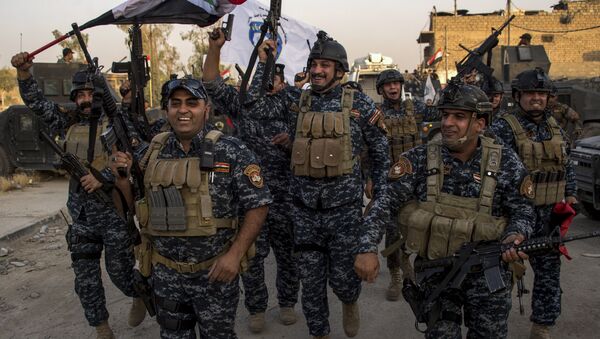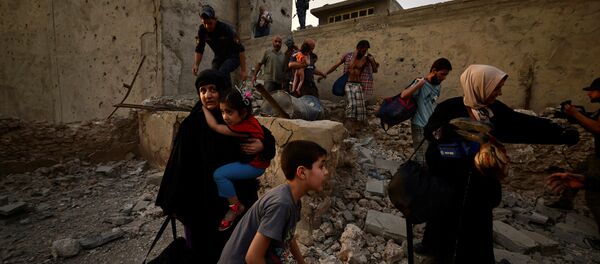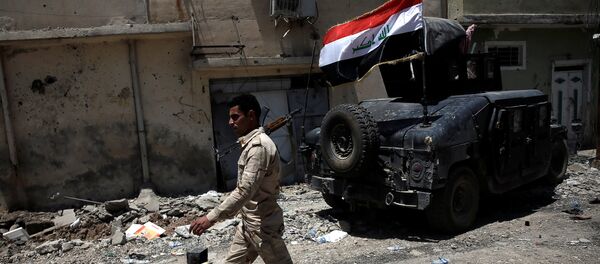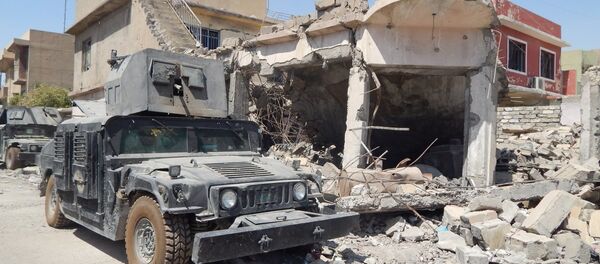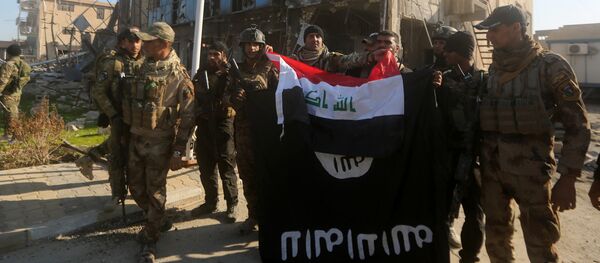‘Victory bridge’
"The passage is closed, nobody move!" shouted the soldier guarding the Nasr bridge ("Victory Bridge" when translated from Arabic). The bridge connects the eastern and western parts of Mosul, or the left bank and the right bank, as the local residents call them. It is here that hundreds of the city residents are stuck trying to return to their homes in the western part of the city.
The residents of the "old town," the neighborhood where the most violent fights against Daesh started three weeks ago, are also trying to return to their homes.
Despite his decisive tone of voice, the soldier gives us hope.
"Wait, we will try to do something for you," he said.
Indeed, we passed the bridge an hour and a half later.
Not to become refugees … or it is better to live at war than to beg
The Mosul residents waiting for the opening of the bridge have spent all day long at this checkpoint. Among them is Leyla, a 13-year-old girl from al-Maidan neighborhood, which had been liberated from Daesh militants by Iraqi forces several days ago. It is still too early to speak about the full liberation of the district, as dozens of terrorists in separate groups are moving around the area, resisting the Iraqi military.
Her mother, who did not give her name, said that they had lived in a three-storey building which had been blown up by car bombs. Leyla’s mother cannot imagine how the family will live in the ruins of their house, but is certain that this outcome is far better than joining the Iraqi refugees.
"I have been there several days ago, I have seen the fully destroyed house and the remains of the burnt cars … But it is better to live at war than to beg food for yourself and your children," the mother explained.
She added that together with her family, she had left home when the area was still under terrorist control.
"They gave us 10 minutes to flee, then they blasted the mine-studded cars … Men, women, children, everyone ran outside immediately … Ran in the direction of the military. Then we heard powerful explosions. Our homes, our property … everything has been blown up," the mother added.
Some die at war, some make profit of it
To save one’s life and the lives of one’s children is half the battle. Those who have lost their homes need to settle somewhere, even if only temporarily, while no help is available.
"I beg you, journalists, tell those living on the ‘left bank,’ let them have mercy for their neighbors from the ‘right bank’… How can they ask ‘three banknotes’ [around $300] or ‘five banknotes’ for the rent? We have left everything in our homes which had been blown up," a resident of the ash-Shifa neighborhood who identified herself hajj Rahma said.
The woman is now huddling together with her daughters and neighbors in a room given to them by the imam of the district’s mosque.
"We have no money to pay the rent. But we will better live all crowded together than wallow in debt and humiliation," Rahma said.
‘Right bank’
When we are finally allowed to cross the bridge to the ‘right bank’ of Mosul, we see an almost entirely ruined area. The gravel road leads us to the first checkpoint; the self-defense forces’ checkpoint. Behind it one can see a large, ruined building which resembles an ancient besieged fortress. The newly-replaced Iraqi flag now flies above the building. Until now, the Daesh flag flew in its place.
Walls of buildings contain inscriptions written by the militia with messages of support for the Iraqi armed forces. Most of them read the militia’s names and "we have been here."
Smell of death
A woman of about 40 walked around a huge puddle of sewage at the entrance of al-Abar neighborhood.
"There is nothing left for living here, no electricity, no drinking water, the houses are destroyed, and the bodies of Daesh terrorists are laying there, under the ruins," the woman said.
A 65-year-old Mosul resident believes that the bodies that had not been taken away pose a danger to the survivors' health.
"We do not know how to take out the corpses and bury them without catching a disease," the man said.
Khaled Ghanem, 52, who stands near his neighbor's house, where the body of a terrorist killed by the Iraqi Federal Police during the building's siege still lies. He told us that the militants had barricaded themselves in the house, along with the family that lived there.
"The battle lasted several hours, and then the police took it by storm," Khaled said. He added that the smell that came from the corpses a few days later prompted the residents to remove and bury the bodies themselves. However, they did not have time to bury all the cadavers.

